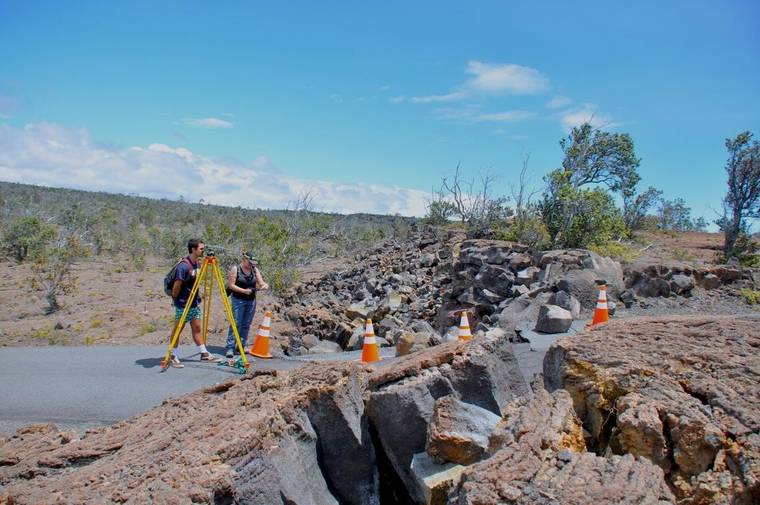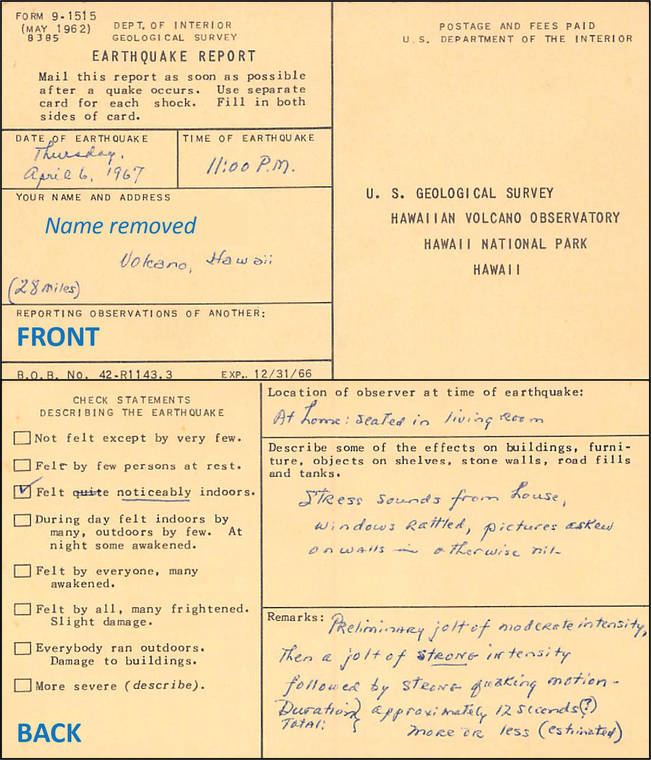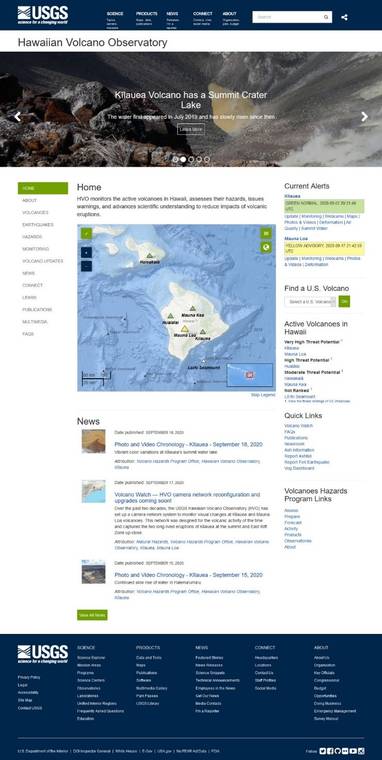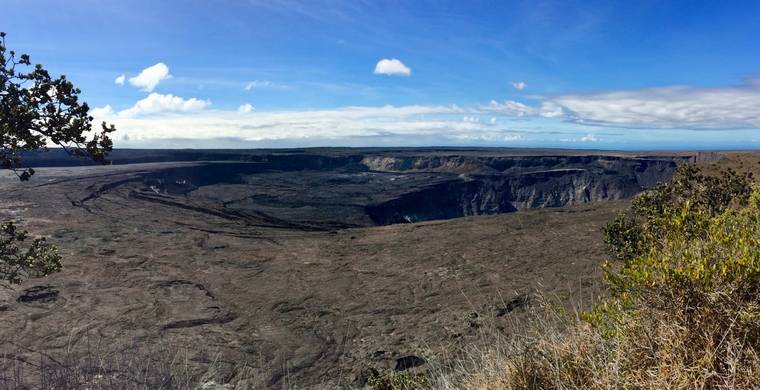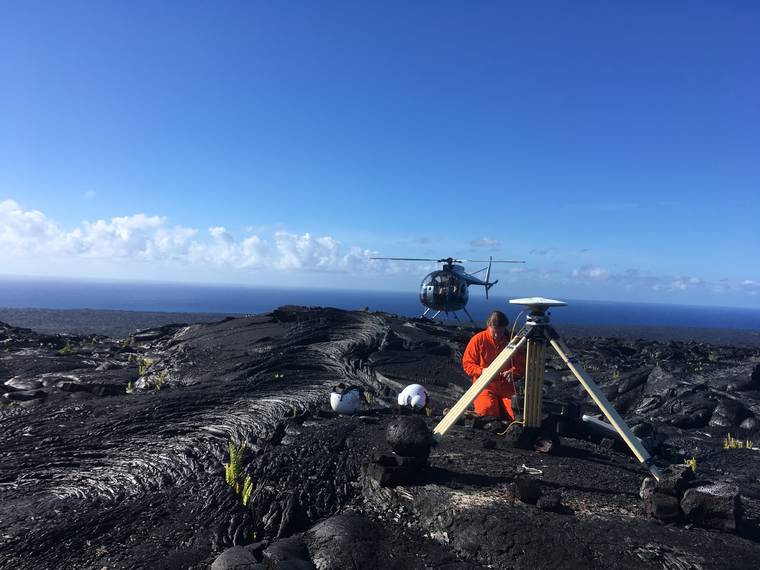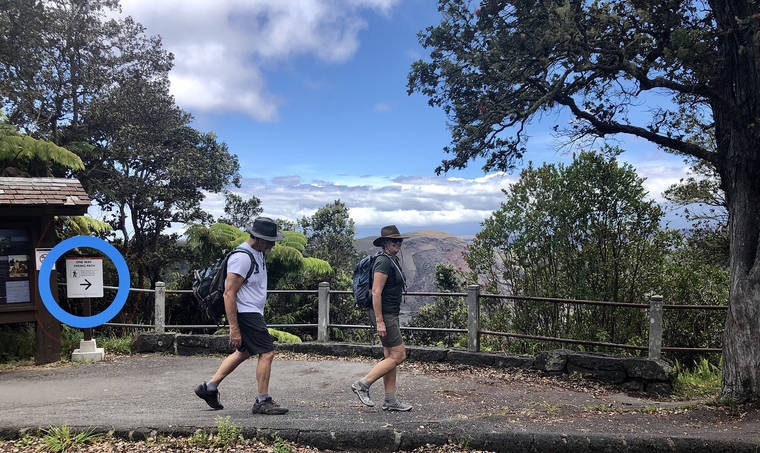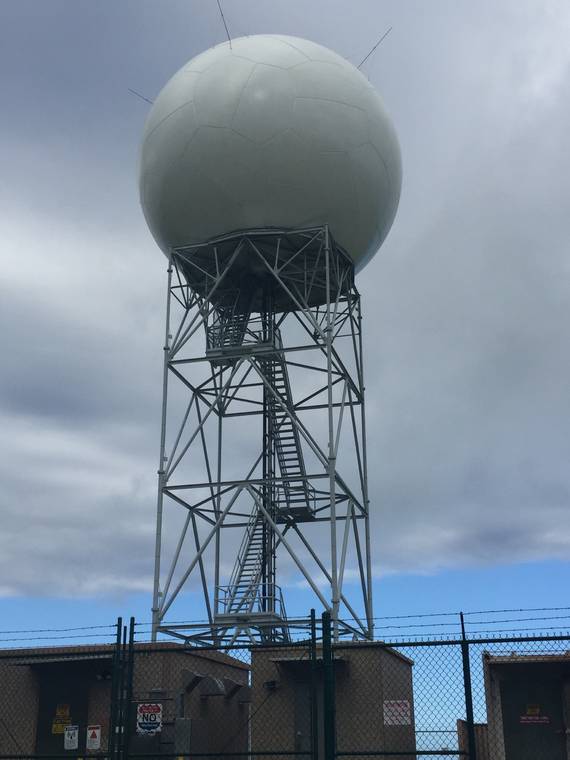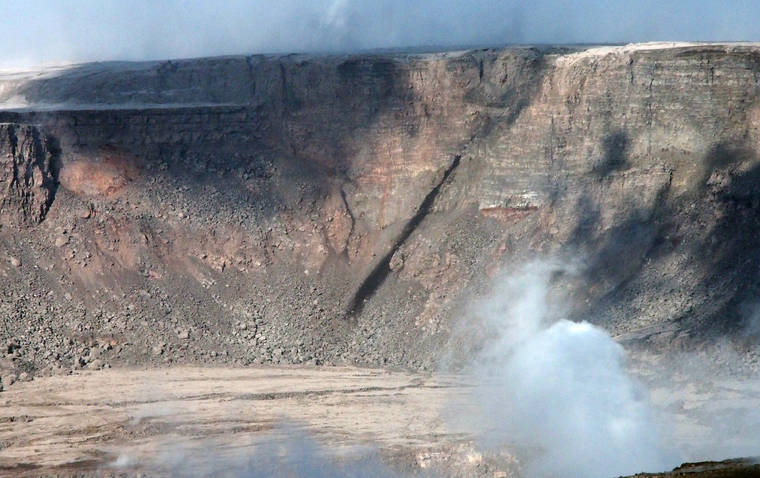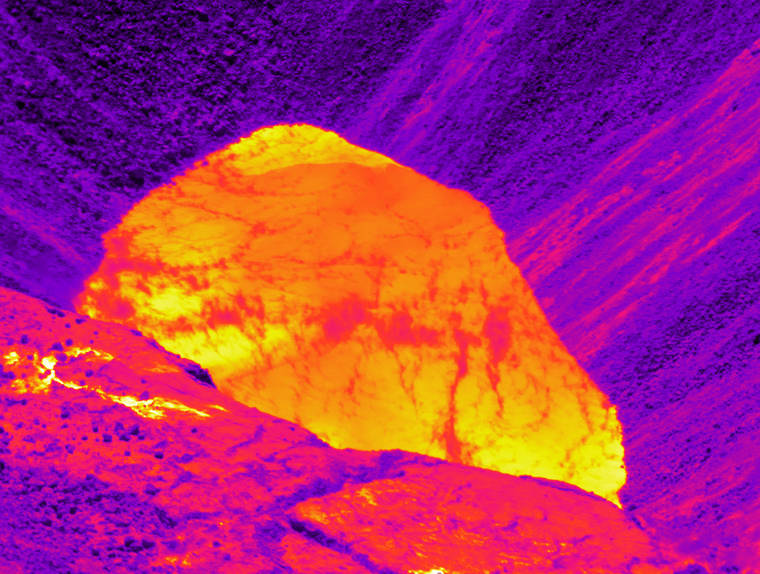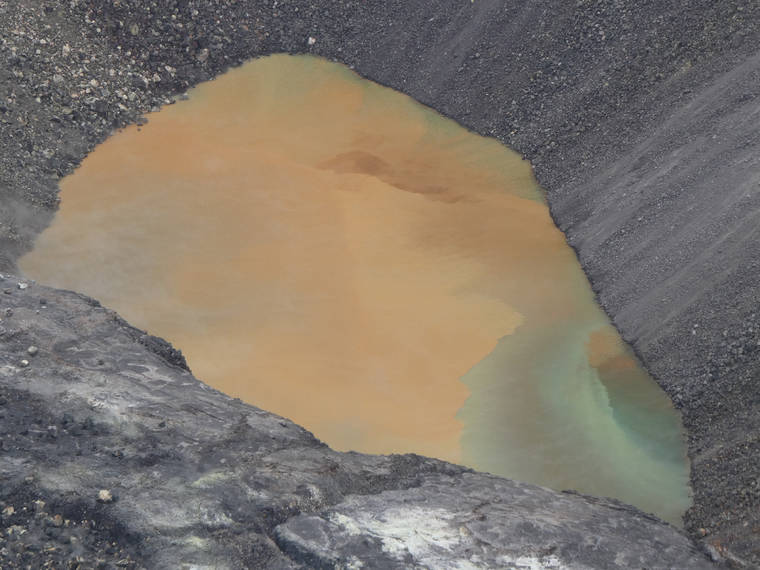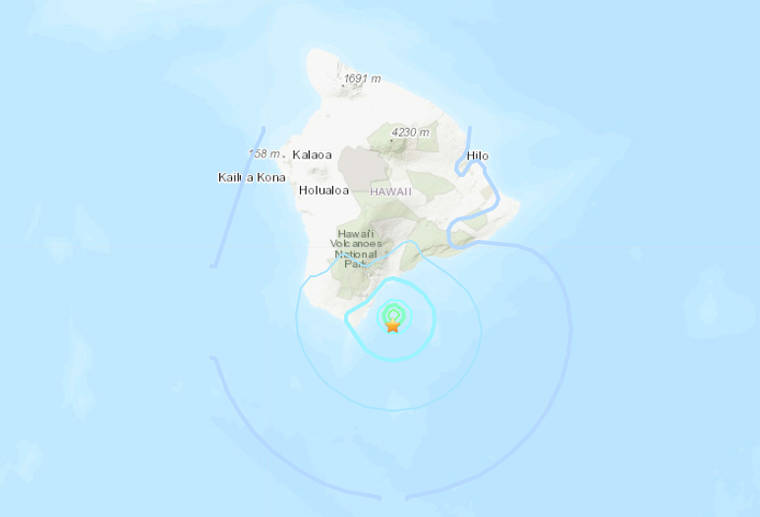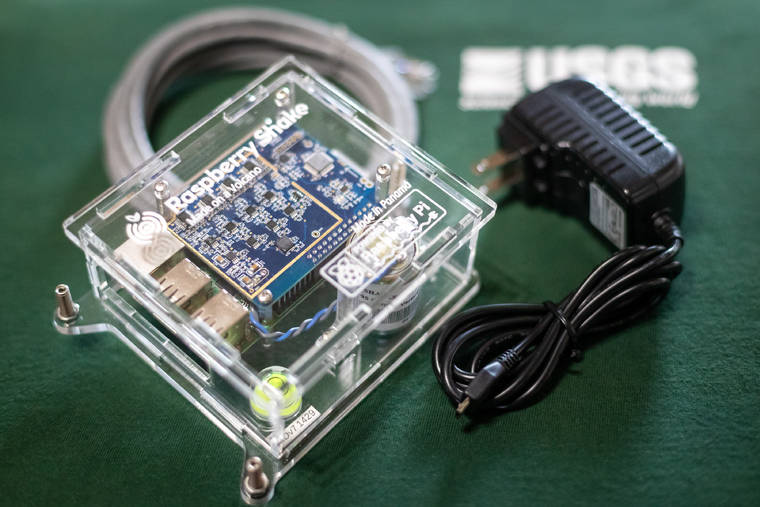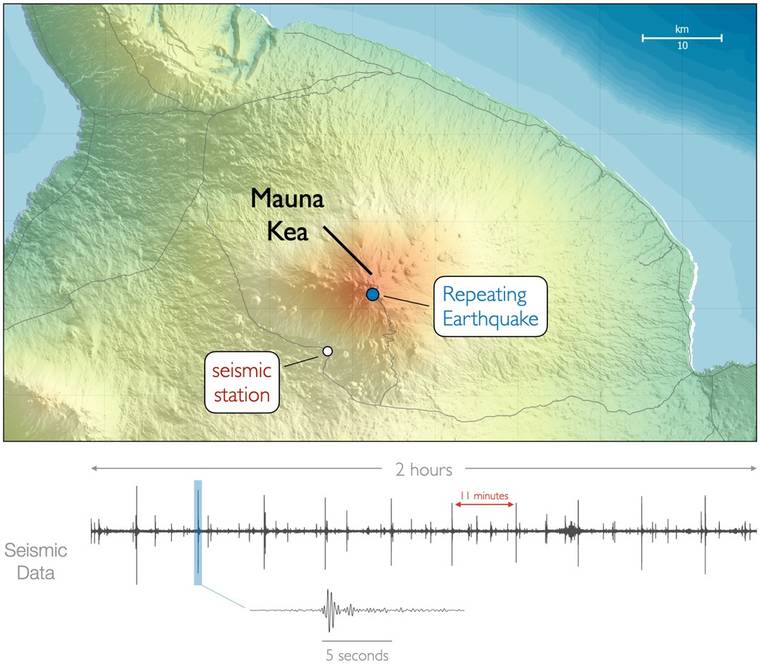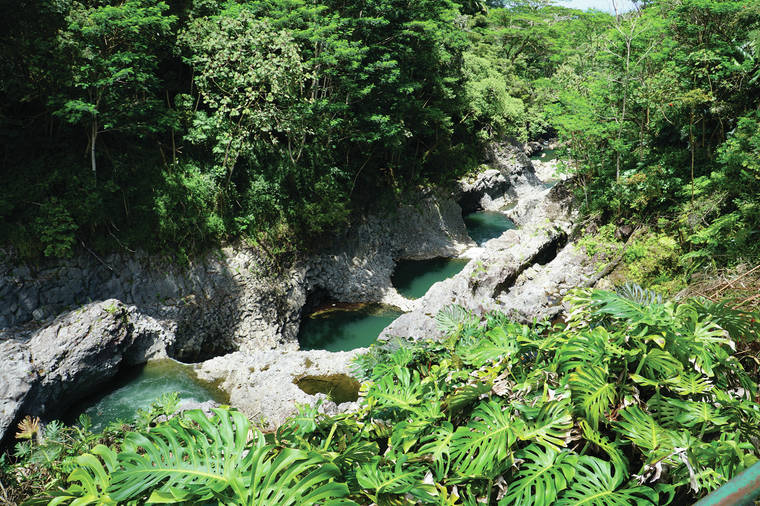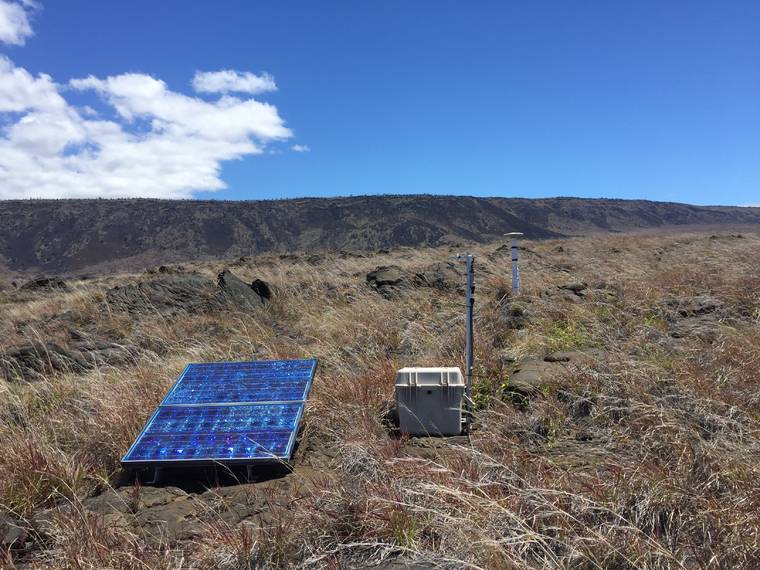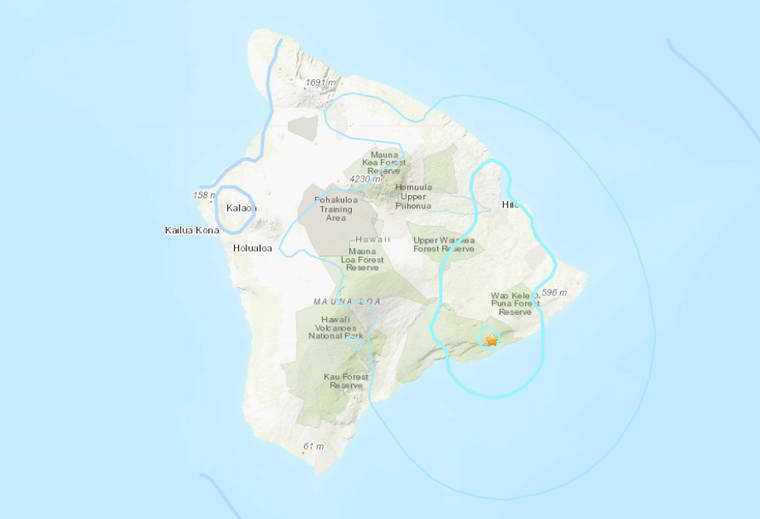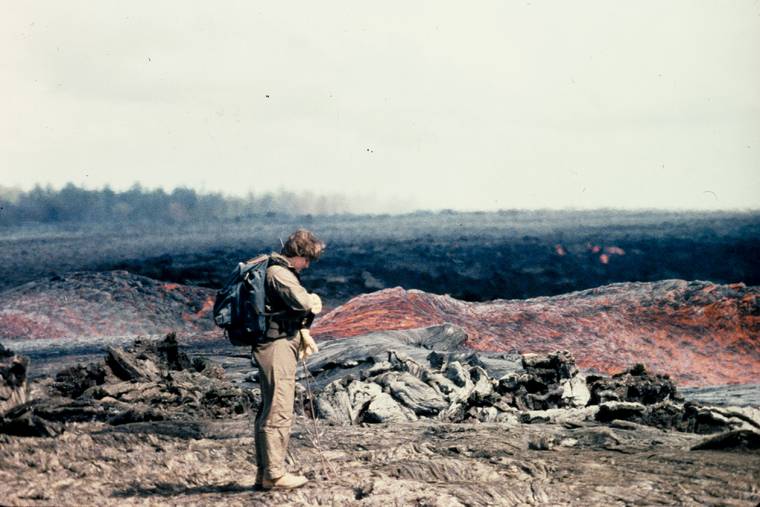Volcano Watch: Crack team of geologists measure the Koa‘e fault system
The Koa‘e fault system connects Kilauea’s East and Southwest Rift Zones south of the caldera. Faults here appear as low cliffs, or “scarps” along Hilina Pali Road in Hawaii Volcanoes National Park. These fault-cliffs slip during major earthquakes, such as those of May 4, 2018, near the beginning of Kilauea’s 2018 eruption.
Volcano Watch: Join the Great Hawaii ShakeOut
Major earthquakes cannot be predicted. Successful earthquake predictions need to have three things correct: the location, the time, and the magnitude. The best anyone can reliably do is get two out of three correct, for earthquakes that impact the public.
Volcano Watch: What do earthquake measurements mean?
Residents on Hawaii Island are accustomed to feeling earthquakes. As the ground shaking subsides and the safety of everyone around is assured, one of the first questions we typically ask is “how big was that earthquake?”
Volcano Watch: HVO’s new website is more accessible and mobile-friendly
You may have seen the Yellowstone Volcano Observatory’s “Caldera Chronicles” article about their new-and-improved website, in which they hint at a change coming to the Hawaiian Volcano Observatory’s (HVO) website, too. It’s true!
Volcano Watch: On the surface of Kilauea’s new landscape, a story is told
Kilauea’s 2018 summit collapse dramatically transformed the geometry and appearance of Halema‘uma‘u crater and Kilauea caldera. Last week’s “Volcano Watch” article described how the 2018 events impacted the magma plumbing system beneath the surface of Kilauea’s summit. This week, we’ll explore how the 2018 events impacted the geologic deposits on the surface.
Volcano Watch: Underneath Kilauea’s new landscape, the magma plumbing keeps working
Last week, Hawaii Volcanoes National Park was able to open the Kilauea Overlook to the public for the first time since the lower East Rift Zone eruption and summit collapse in 2018. The viewing location offers a new perspective on the breathtaking summit collapse structures and the major changes those collapses had on Kilauea’s landscape.
Geodesy through time: A history of measuring the shape of Hawaiian volcanoes
Geodesy is the science of accurately measuring and understanding the Earth’s geometric shape, gravity field, and orientation in space — and how these change through time. Many geodesists today map shorelines, determine land boundaries, and improve transportation and navigation.
Entrance fees to be waived at Hawaii Volcanoes National Park; Kilauea Overlook, closed since 2018 eruption, to open
Entrance fees will be waived Tuesday at Hawaii Volcanoes National Park and all fee-charging national parks in the U.S. in celebration of the 104th anniversary of Founder’s Day.
Volcano Watch: Doppler radar in Ka’u provides more than a weather radar
Driving Highway 11 from Volcano to Waiohinu on sunny, vog-free days, it’s hard to miss that bright white soccer ball on the slope of Mauna Loa above Pahala Town.
Volcano Watch: Water was in Kilauea caldera before the 2018 summit collapse
On July 4, 2018, an observer at the Volcano House Hotel was watching the evolving collapse of Halema‘uma‘u Crater, 2.5 miles away. Suddenly, he did a double take, blinked a couple of times, but couldn’t erase the dark line descending the wall of Kilauea caldera above Halema’uma’u. Not knowing what it was, he dubbed it the “black streak.”
Volcano Watch: How hot is Kilauea’s summit water lake?
The recent first anniversary of the appearance of water at Kilauea’s summit is a reminder of how much has changed since the end of the 2018 eruption and summit collapse.
Volcano Watch: Kilauea Volcano’s summit water lake is 1 year old
On July 25, 2019, ponded water was first observed within Halemaumau at the summit of Kilauea Volcano. Over the past 12 months, the USGS Hawaiian Volcano Observatory (HVO) has watched this amazing body of water grow from a nascent pond into a veritable lake, the first observed within Kilauea caldera in at least 200 years.
M-4.7 earthquake strikes off Ka‘u
Hawaii Island residents were shaken awake Monday after a magnitude-4.7 earthquake struck in waters off Ka‘u
Volcano Watch: HVO looking to install seismographs in your community
The Youth and Education in Science (YES) program at USGS in collaboration with the Hawaiian Volcano Observatory (HVO) is launching a community outreach and educational project called Bridging Local Outreach &Seismic Signal Monitoring (BLOSSM) in Hawaii. BLOSSM aims at engaging local students and communities through seismology.
Volcano Watch: Deep repeating earthquakes beneath Maunakea
Maunakea volcano hasn’t erupted in over 4,500 years, but that doesn’t mean it’s quiet. In fact, for decades it has been hiding one of the most unique seismic signals seen at any volcano.
Volcano Watch: A legendary part of the Wailuku River is again revealed
The “Hawaiian Sup‘pa Man,” demi-god Maui, had several adventures on the Wailuku River in the legendary past. He rescued his mother, Hina, who lived in the cave behind Waianuenue (Rainbow Falls), from Kuna, a threatening mo‘o (legendary giant lizard), eventually killing him and leaving his body as a small island in the pool fronting Hina’s cave.
Tech talk part 2: Schematic diagram of one HVO technician’s position
Last week’s “Volcano Watch” article introduced the role of “technician” at the USGS Hawaiian Volcano Observatory (HVO). This week, we present the introspective of Steven Fuke’s life (schematic diagram) as an “electronics technician” at HVO through his experiences, starting with his introduction to HVO.
M-4.6 earthquake shakes Big Island
The U.S. Geological Survey’s Hawaiian Volcano Observatory recorded a magnitude-4.6 earthquake beneath Kilauea Volcano’s south flank at 11:20 p.m. Thursday.
Volcano Watch: Electronic ‘doctor’ tracks health of monitoring stations
As part of Volcano Awareness Month earlier this year, “Volcano Watch” featured five articles focused on different roles at the USGS Hawaiian Volcano Observatory (HVO). These articles described the roles of “geodesist,” “Scientist-in-Charge,” “gas geochemist,” “seismologist,” and “geologist.” This month, we continue that series, focusing on the role of “technician.”
Volcano Watch: Extraordinary tenure ends for leader of Hawaiian Volcano Observatory
The extraordinary leadership of Tina Neal as Scientist-in-Charge (SiC) of the USGS Hawaiian Volcano Observatory (HVO) comes to an end this week, when she returns to the alaska Volcano Observatory after fulfilling her five-year commitment to HVO. David Phillips, HVO’s Deputy SiC, will take the helm until Tina’s successor arrives.

